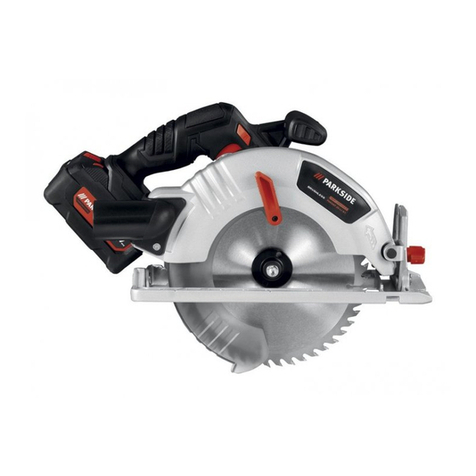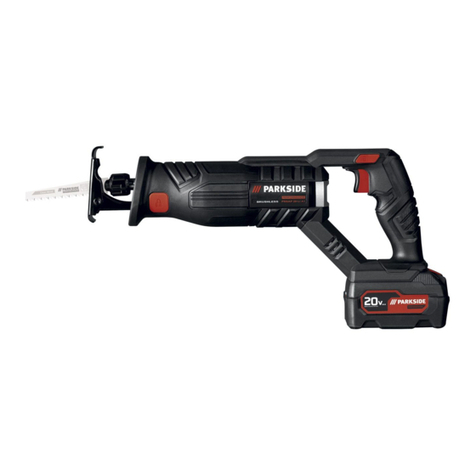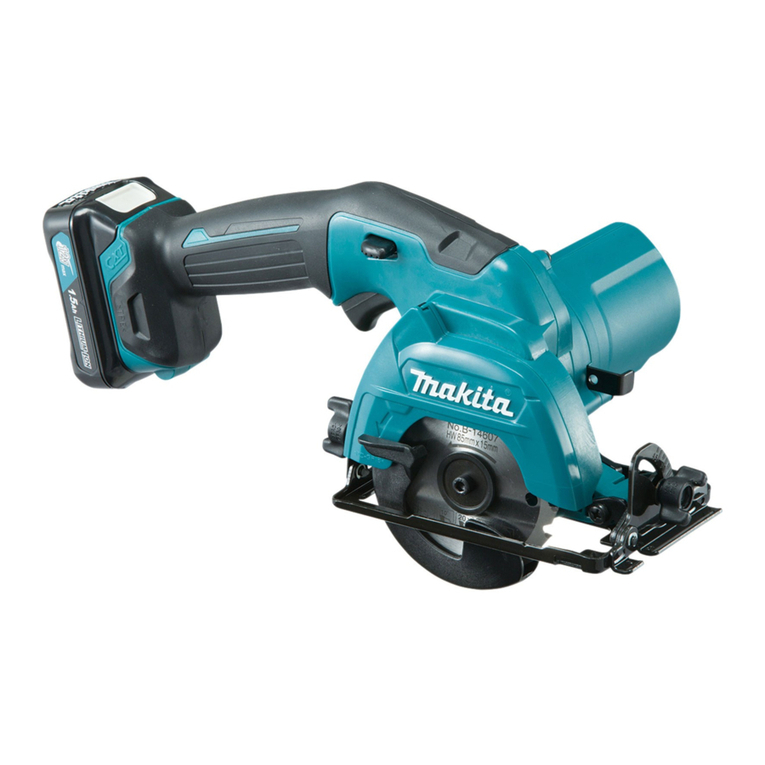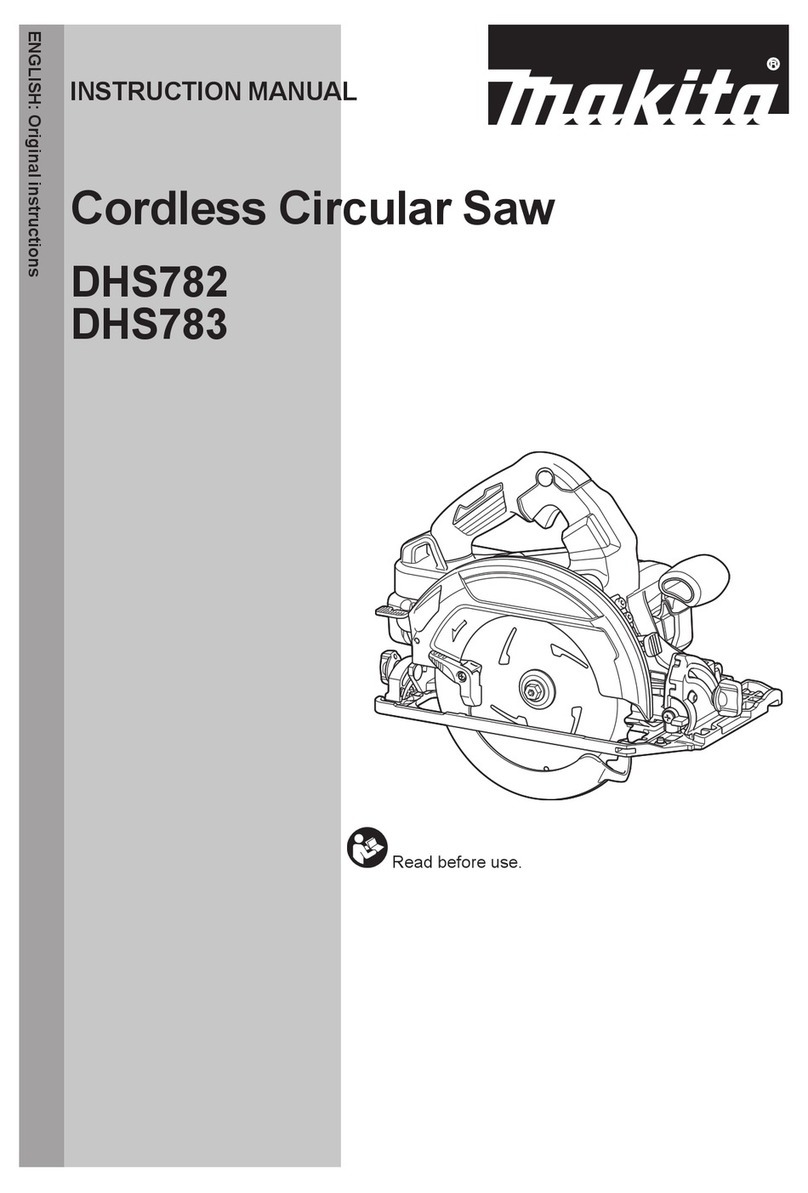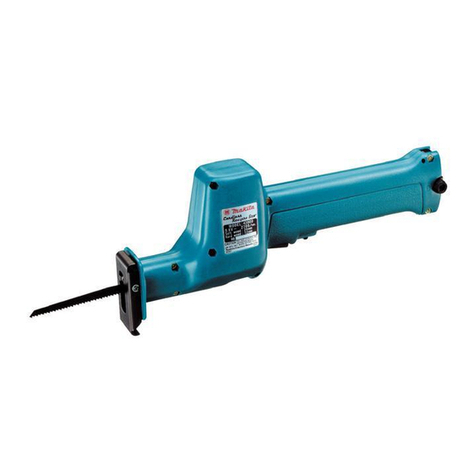
9GB
m WARNING!
uThe vibration and noise emissions during
actual use of the power tool can differ
from the declared values depending on
the manner in which the tool is used,
especially what kind of workpiece is
processed.
Try to minimise exposure to vibration and
noise. Examples of measures to reduce
vibration include wearing gloves when
using the tool and limiting working time. All
parts of the operating cycle must be taken
into account (e.g. times when the power
tool is switched off and when it is running
idle in addition to the trigger time).
Safety instructions
General power tool safety
warnings
m WARNING!
uRead all safety warnings,
instructions, illustrations and
specifications provided with
this power tool. Failure to follow
all instructions listed below may result in
electric shock, fire and/or serious injury.
Save all warnings and instructions for
future reference.
The term “power tool” in the warnings refers to
your mains-operated (corded) power tool or
battery-operated (cordless) power tool.
Work area safety
1) Keep work area clean and well
lit. Cluttered or dark areas invite accidents.
2) Do not operate power tools in
explosive atmospheres, such as in
the presence of flammable liquids,
gases or dust. Power tools create sparks
which may ignite the dust or fumes.
3) Keep children and bystanders
away while operating a power
tool. Distractions can cause you to lose
control.
Electrical safety
1) Power tool plugs must match the
outlet. Never modify the plug in any
way. Do not use any adapter plugs
with earthed (grounded) power
tools. Unmodified plugs and matching
outlets will reduce risk of electric shock.
2) Avoid body contact with earthed
or grounded surfaces, such as
pipes, radiators, ranges and
refrigerators. There is an increased risk
of electric shock if your body is earthed or
grounded.
